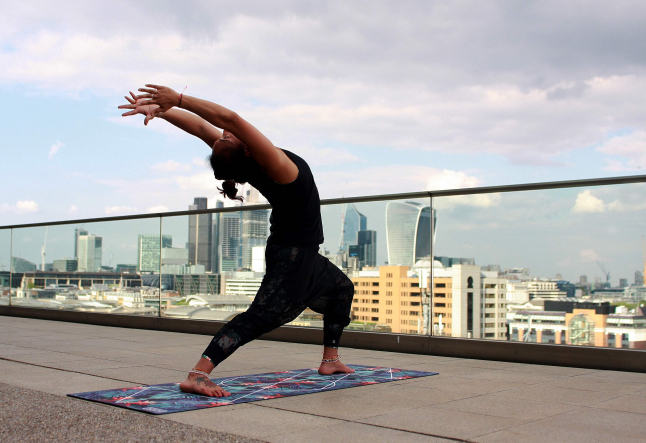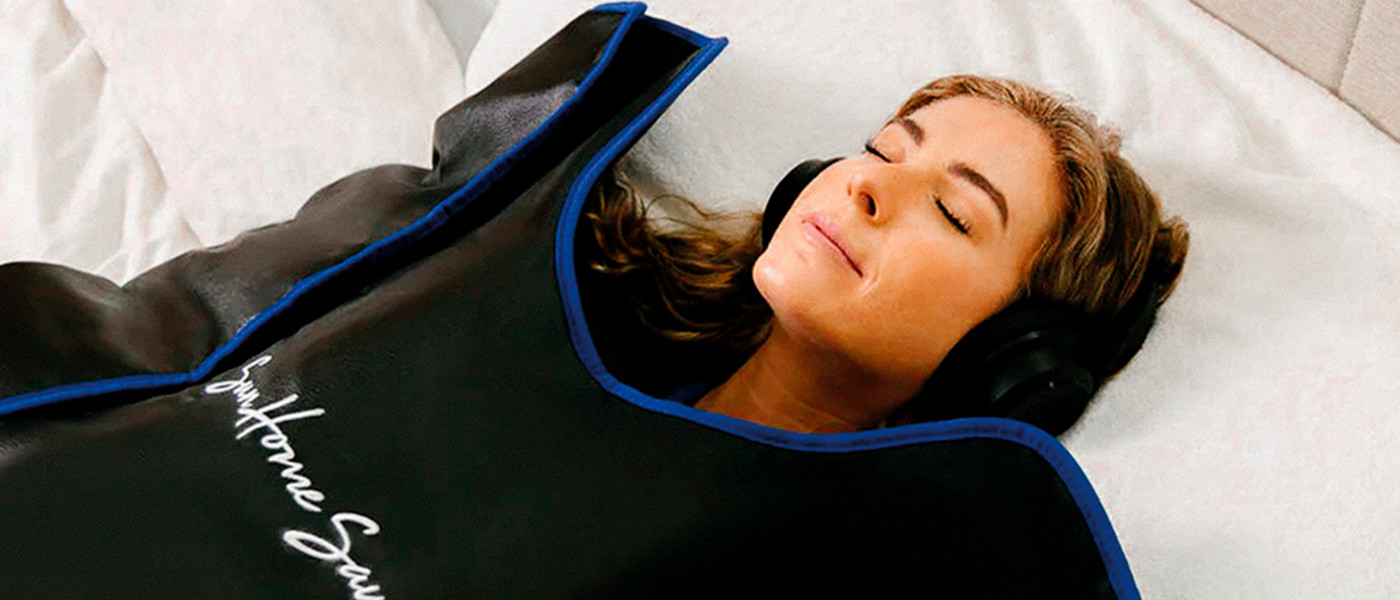yoga for trauma: why it works

a scientific insight to how yoga heals after traumatic experience
It was a year into my ‘MA in Yoga Studies’ when I began to mentally grasp what my body had learned through yoga practice – that trauma is an embodied experience. In order to heal from it, the body must be involved in treatment.
Yoga can help in all the places where the human spirit is broken and needs tending to
If you have experienced trauma and the healing benefits of yoga, I hope this article will corroborate what you may already know – that yoga works.
At 31, I moved from London to LA with the intention of researching what happens to the mind and body when undergoing traumatic experiences. A few years earlier, I had the rug pulled out from underneath me. In the space of 6 months I opened my first restaurant, lost my dad to a brain tumor and had my heart broken by the man I thought I was going to marry.
Amid the chaos and the stress, and with no coping tools to draw on, I followed the advice of a waitress who worked at my restaurant and started going to yoga. What I found within the 4 corners of my mat was a pathway to peace and a profound release of the incredible tumult I was experiencing.
A couple of years later (and still very much committed to my practice) I trained to become a yoga teacher as a way to deepen what I already knew and loved at the intrinsic level. This practice was healing me from the inside out, nurturing my heart, and enriching my soul.
A year or so later, I began an intellectual mission to find out just what had happened during my transition to wholeness. I boarded the plane for LA with my possessions packed into five giant suitcases, and began my Master’s research into the effects of grief and trauma on the mind-body organism.
I am sharing what I have learned in my academic research, teachings and personal experience in the hope that this knowledge will support those undertaking a healing journey. At the core, you can feel the mystical beauty of these ancient traditions meeting comfortably with the evidence provided by science. Far from seeking to diminish the spiritual heart of yoga, my wish is that this empirical knowledge will help advance the uptake of this practice.
Firstly, to understand how trauma impacts the mind-body relationship we must look at how the body responds to such stimuli.
When the body perceives a threat to its safety, the sympathetic portion of the nervous system releases adrenaline, cortisol, and norepinephrine.
This reaction (known as fight-or-flight) activates the body by increasing the heart rate, speeding up the breath and sending blood to muscles that need to run. All the systems of the body co-operate in order to flee danger.
Once the perceived threat has passed, the parasympathetic portion of the nervous system releases serotonin, dopamine, and endorphins. These hormones soothe the nervous system and bring the body back into rest-and-digest mode.
In both systems, the hormones are activated by neurotransmitters which work in healthy companionship with all the other systems of the body: cardiovascular, respiratory, immune, endocrine, and digestive. However, the body’s natural ability to return to a state of equilibrium (homeostasis) can be disrupted during trauma, especially if the nervous system finds itself on constant high alert, scanning for danger.
Traumatic experiences – which range from verbal, sexual, physical, emotional abuse to war, natural disasters, illness, loss, and accidents – can leave a person in a state of persistent arousal. Especially if the trauma is repeated or unresolved (i.e. has not been worked through the mind-body system with therapeutic modalities).
A state of constant arousal activates the amygdala and prefrontal cortex of the brain, the areas responsible for activating fear and making decisions. This will eventually result in over-exertion of the sympathetic reaction and the release of adrenaline, possibly leading to adrenal fatigue. What’s more, the body is likely to process and store complex emotions surrounding the traumatic event(s) leading to physical manifestations of the mental/psychological pains. This is often where disease (‘dis-ease’) arises.
When the body becomes a storehouse of unresolved trauma, and physical pain, the mind will do what it can to dissociate from the body.
These diversion tactics are well-known to those who render their bodies insensible; whether through drink, drugs, sex or self-harm.
The brain and the body are connected by the vagus nerve which manages and communicates responses via the nervous system. When a person undergoes traumatic experiences that are not tempered by the body’s natural ability to reset itself to rest-and-digest, the pathways of communication become blocked and the mind begins to dissociate from the messages it receives from the body.
This degree of disassociation can lead to severe energetic blocks in the body (which manifest as disease and disruption to the immune system).
The mind can become plagued by persistent negative thoughts, depression, anxiety, panic, fear and endless replays of the traumatic experience. The mind gets caught in a self-destructive, self-identifying loop and forgets about the body.
In order to understand how yoga – made up of mindful movement and breath work – can provide coping mechanisms for living with trauma, we need to think of the whole body as a map of the psyche.
Specific emotions induce changes in our breathing patterns and voluntary changes in our breathing will induce specific emotions. Yoga works to bring the body back into presence through mindful breath and movement, frees the mind from ‘top-down’ activation ,and awakens the natural wisdom of the body.
A conscious, slow and full exhalation will activate the parasympathetic nervous system and alter the activity of the vagus nerve to open the connection between mind and body. A deep inhalation will energize and innervate the organs, the lungs, the glands, the heart and the brain.
When we combine conscious breathwork with the mindful movement we create the opportunity to witness how our body responds to the challenge – both mentally and physically – and observe a new direction.
When we meet resistance (for example boredom or frustration) we can use our attention on the breath to soften the mental reaction, slow the mind and calm the physical systems of the body.
In this way, when there doesn’t seem to be a choice about where we find ourselves – both in life and in practice – we can instead choose how we react. We come to see that the voluntary change in breath corresponds to a voluntary change in outlook and that the simple act of breathing is available to us at all times and in all situations.
The positive feedback system during yoga works like this: the body holds a pose, say Warrior II, for longer than it might like to, the muscles work harder to keep the spine long, the front leg bent, both arms extended and straight. After a few seconds, the mind chips in. It complains about the pain and asks to stop. The tension in the lower back gets bored and wants to do something else.
This is totally normal. This is where the breath comes in and why it is so crucially important to our yoga practice – without it, we are simply not practicing yoga, but gymnastics. In order to quiet the mind and train the brain, we draw on the breath, inhaling deeply and exhaling fully. We stay with the movement of the breath at all times, in every posture.
The more we practice, the stronger the feedback between the two responses becomes, meaning that when we’re faced with stressors and aggravations from daily life, our neural memory knows how to maintain our arousal at a comfortable and safe level. In short, we become calmer and more easily able to handle life’s ups and downs with greater ease, confident that we have faced and overcome adversity before now.
This is why yoga has shown to be especially effective for war veterans and PTSD sufferers – in fact, any population used to running on ‘high alert’ in such a way as to exhaust the adrenal system.
As a result, we find ourselves better able to regulate our emotions, limit defensive reactions, cooperate, connect and love in a way that is deeply healing to the traumatized mind-body as a whole.
Now we know what happens in the body and brain of an individual suffering trauma, we can use evidence-based, trauma-specific yoga practices as part of a broader program of therapeutic treatments to help patients feel safe in their bodies again.
Once students learn the basics of posture and breath, they not only reduce the need for medication, but are empowered to self-regulate and find their own pathway to peace. And while yoga alone can’t heal the effects of trauma or change past events, it can act as a crucial ally in bringing us home to ourselves and embrace the present moment for whatever it holds.
To Depart
As Thich Nhat Hanh writes, ‘There is no way to peace. Peace is the way.’
Read next >> yoga and meditation for people with post-traumatic stress disorder




